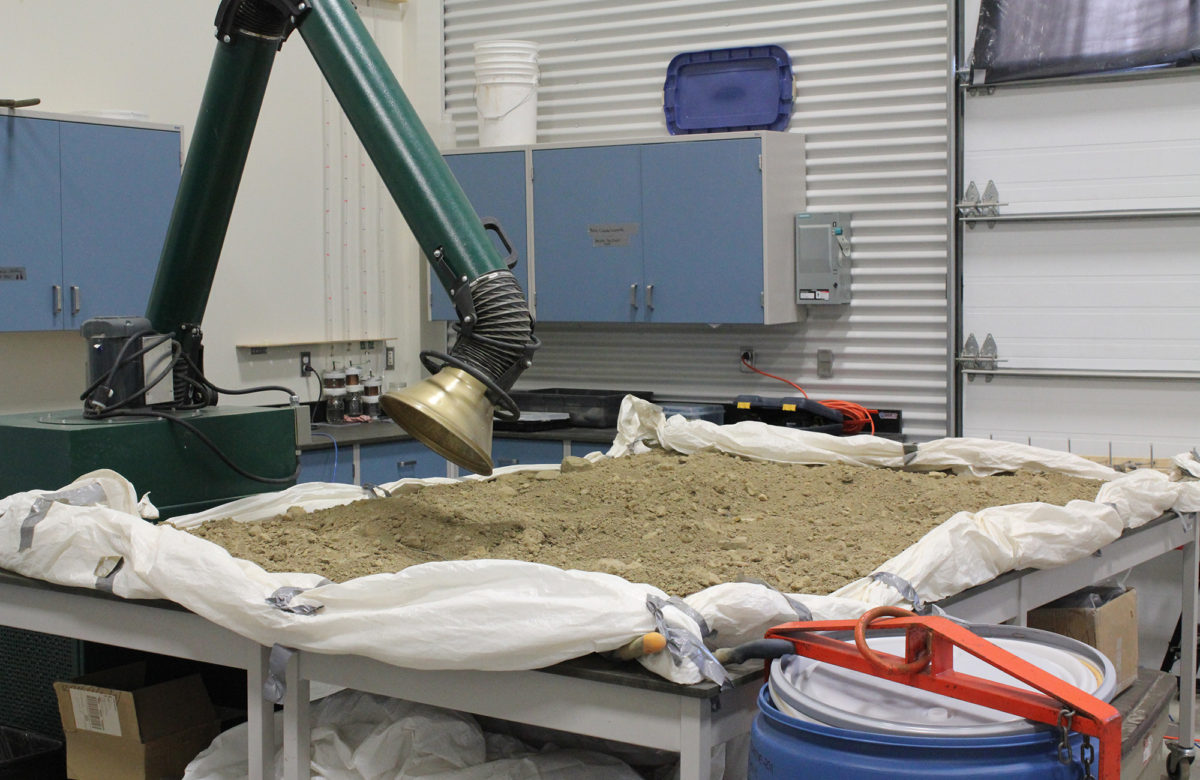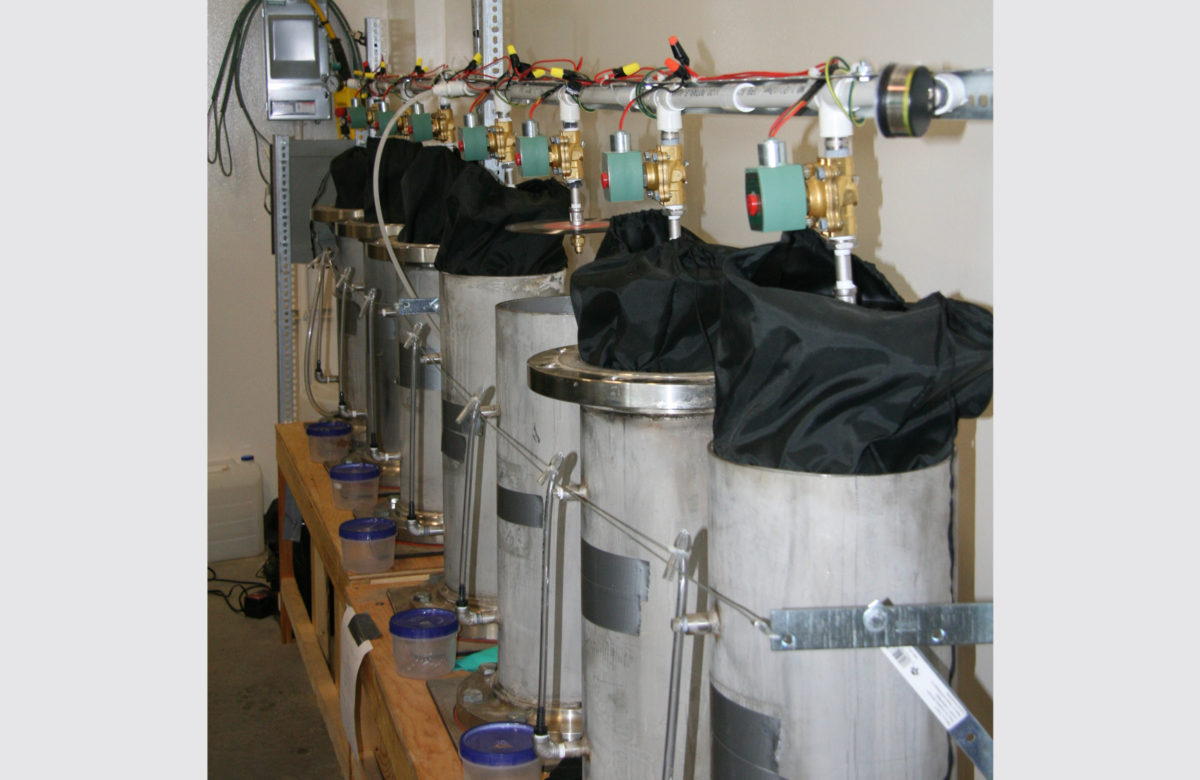The Contaminant Hydrogeology Laboratory provides a unique environment for evaluating contaminant behaviour and in situ soil and groundwater remediation technologies at an intermediate scale between laboratory and field experiences.
The laboratory is one of the INRS Laboratories for Scientific and Technological Innovation in Environment (LISTE), located in the Québec Metropolitan Technology Park, and can be operated at cold temperatures.
- Six, tall, stainless steel columns 62 cm in diameter and 80 cm high
- Ten column segments 21.2 cm in diameter (6 segments 0.6 m high and 4 segments 1.2 m high)
- Several small-diameter columns (5 cm) of different heights
- A soil storage and preparation area
- Four 5 m3 tanks containing the injection solutions
- Two marine containers for soil storage
- An automated system for operating the laboratory
- A data acquisition system
- Measuring instruments for characterizing soils and aqueous and organic phases sampled during granulometric, characteristic curve, density, viscosity, surface tension, and contact angle tests.
- Study the behaviour of recalcitrant contaminants in soil and groundwater, including energetic materials from military training grounds
- Evaluate passive, in situ groundwater remediation methods (natural attenuation, permeable reactive barriers)
- Develop and compare the effectiveness of active, in situ remediation methods such as sparging, aeration, biodegradation, washing with surfactants, and chemical oxidation, etc. for different types of soils and contaminants
- Test and compare injection/pumping strategies for active, in situ remediation methods
- Study the behaviour of sheer thinning solutions (polymers, foam) injected into geological materials with different levels of permeability
- Develop and test mathematical models used in designing field tests and predicting their results
Contacts
Richard Martel
Professor and Scientific head
Phone: 418-654-2683
richard.martel@ete.inrs.ca
Boutaina El Jai
Partnerships and Research Development Advisor
Phone: 418 654-2531
boutaina.el_jai@inrs.ca
Contaminant Hydrogeology Laboratory
Institut national de la recherche scientifique
Eau Terre Environnement Research Centre
490 rue de la Couronne
Quebec City, Quebec G1K 9A9
Canada



